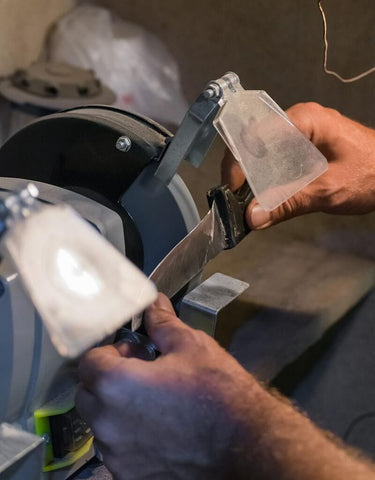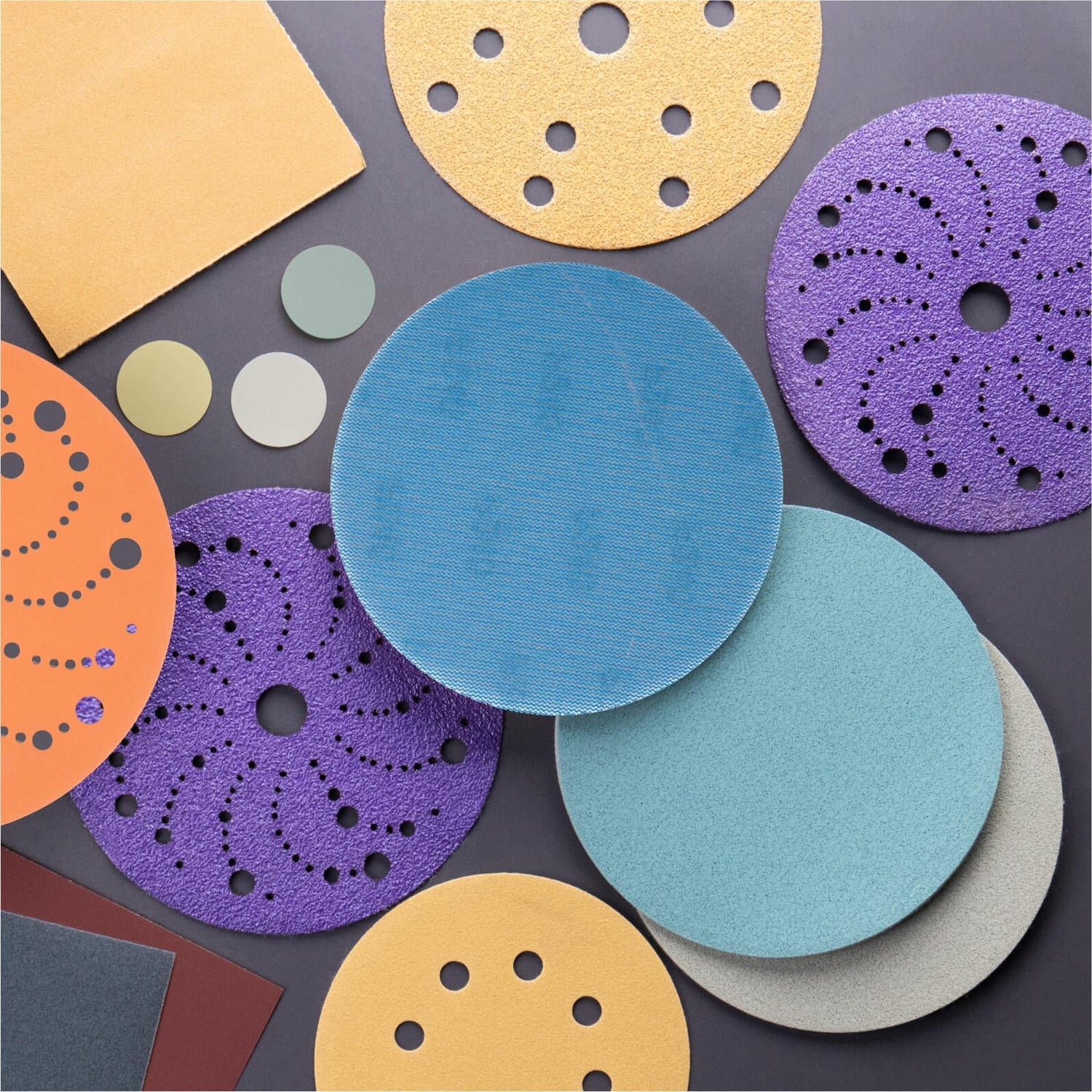
How to Sharpen Knives Like a Pro?
Whether you're a chef, a home cook, or simply someone who appreciates a finely honed blade, mastering the art of knife sharpening is essential.
Many people believe that honing and sharpening are interchangeable terms or that only professionals can effectively sharpen knives. In reality, with the right knowledge and tools, anyone can master the art of knife sharpening.
In this comprehensive guide, we will explore various methods for sharpening knives, ranging from traditional techniques like using sharpening stones to modern tools such as electric sharpeners. Additionally, we will delve into unconventional methods like sandpaper sharpening, providing you with a diverse toolkit to achieve razor-sharp edges on your knives.
Traditional Sharpening Methods

Honing with a Honing Steel
Using a honing steel is a traditional method to maintain your knives between sharpening sessions. Unlike sharpening, honing doesn't sharpen the blade but straightens and aligns the small teeth along the edge, improving cutting performance. To hone your knife effectively, hold the steel upright with the tip on a stable surface. Then, glide the blade smoothly across the steel at the same angle, alternating sides for an even edge.
Sharpening Stones
Types of Sharpening Stones
Sharpening stones, also called whetstones, come in different materials. There are natural stones like Arkansas stones and synthetic ones like ceramic and diamond stones. Each type has its own advantages and abrasive properties, so they suit different sharpening needs and preferences.
Step-by-Step Guide
- Begin by soaking the stone in water for a bit, then place it on a stable surface.
- Hold the knife at the correct angle, typically about 20 degrees, and smoothly glide the blade across the stone with consistent pressure.
- Repeat this process on both sides of the blade until you achieve the desired level of sharpness.
Whetstone Techniques
Setting Up Your Whetstone: Before you start sharpening with a whetstone, it's important to get the stone ready. Make sure it's clean and flat, with no dirt or bumps that could mess up the sharpening. You might want to use a holder to keep the stone steady while you work, so it doesn't slide around.
Angle and Pressure: Getting the right angle and keeping pressure consistent are super important when using a whetstone. Keep the angle steady, usually between 15 and 20 degrees, while you sharpen to make sure it's even and works well. Try out different pressures to figure out how much metal to take off without messing up the blade.
Modern Sharpening Tools

Electric Knife Sharpeners
To get the most out of your electric knife sharpener, there are a few important things to keep in mind. First, make sure to read the instructions from the manufacturer carefully. This will tell you exactly how to use your sharpener and what settings to use. Second, don't press too hard when you're sharpening. If you do, you might grind down the blade too much and mess it up. And finally, remember to clean your sharpener regularly to keep it working well for a long time.
Pull-Through Sharpeners
Pull-through sharpeners have two wheels with rough surfaces set at specific angles. When you pull the knife through, these wheels sharpen it. They're easy to use and don't need much effort, which is great for beginners. But they might not give you the same exactness as other sharpening methods, and if you're not careful, they could take off too much metal from the blade.
Sharpening Systems
Guided sharpening systems have a base or clamp that holds the knife at a set angle. You move the sharpening stone or abrasive along the blade while it stays fixed. These systems give you precise control over the angle, so you can get the same results every time. But they might take longer to learn and need more practice compared to other ways of sharpening.
Sharpening with Sandpaper
When you think about sharpening knives, sandpaper might not be the first thing you think of. But believe it or not, it can actually work really well if you do it right. Let's see how to sharpen knives using sandpaper:
Grit Selection
Sandpaper comes in different grits, which tells you how rough it is. Higher grit numbers mean finer particles, giving you a smoother result. Here's how to pick sandpaper for sharpening:
- Avoid really rough grits (under 600): They take off metal too fast and can mess up your blade.
- Start with a medium grit (800-1000): This works well for most knives that need sharpening.
- Finish with a higher grit (1200+): After you've made a burr with the medium grit, a higher one can make the edge even sharper.
Pro Tip: Use wet/dry sandpaper. Wetting it while you sharpen helps keep dust and metal bits down, and makes the sharpening smoother.
Step-by-Step Process

Here's a detailed guide on how to sharpen a knife with sandpaper:
1. Secure the sandpaper: Put the sandpaper on a clean, flat surface. You can tape down the corners with masking tape if you need to.
2. Mark the edge (optional): Use a marker to lightly draw a line along the bevel (the angled part) of the knife edge. This helps you keep the angle consistent while you sharpen.
3. Get the right angle: The angle you sharpen at is really important. Hold the knife at a steady angle, usually between 15 and 20 degrees, against the sandpaper.
4. Sharpening strokes: Wet the sandpaper a bit if it's the wet/dry kind. Some people like to pull the knife from the heel to the tip, with medium pressure. Others prefer to push the knife from the tip to the heel. Try both to see which works best for you.
5. Sharpen both sides: Keep sharpening both sides of the bevel, using the same angle and pressure.
6 .Look for a burr: After a few strokes on each side, check for a tiny burr (a little bump of metal) along the edge that hasn't been sharpened. Finding a burr means you're making progress.
7. Removing the burr: When you've got a burr on both sides, switch to a higher grit sandpaper (if you have it) or a finishing stone. Gently rub the flat side of the blade against the sharpening surface to get rid of the burr.
8. Test it out: Carefully try cutting something soft like a tomato. Your knife should slice through it easily with hardly any pressure.
Remember: This is just a general guide. You might need to do more or fewer strokes depending on your knife and how sharp you want it.
How to Choose the Best Sandpaper for Sharpening Knives?
- Silicon carbide and ceramic alumina are common materials used for sandpaper, both of which are great for sharpening knives. Silicon carbide is tough and cuts aggressively, so it's good for the initial sharpening. Aluminum oxide, on the other hand, gives finer grits for polishing and refining the edge.
- Wet/dry sandpaper is a flexible choice. You can use it with water or oil while sharpening. This keeps things cool and helps the sandpaper last longer.
Tips and Tricks for Using Sandpaper Effectively:
- Check often: Keep an eye out for any burrs forming and adjust your technique or sandpaper grit accordingly.
- Take it easy: Sharpening needs patience and practice. Stop and test the sharpness every few passes. Sharpening too much can harm the blade.
- Stay straight: Try to keep your sharpening strokes straight to avoid uneven edges.
- Consider a honing steel (if you have one): Using a honing steel after sandpaper sharpening can refine the edge even more and make it last longer.
- Protect your hands: Wear gloves that can resist cuts when handling the knife and sandpaper.
- Good ventilation is key: Sandpaper dust can be irritating. Sharpen in a well-ventilated area or wear a mask to protect yourself.
Final Thoughts
In conclusion, sharpening knives like a pro is a skill accessible to all enthusiasts, not just professionals. By dispelling myths and exploring various techniques, from traditional to modern, we've empowered you to achieve razor-sharp edges. Remember, practice and patience are key. With dedication and the right tools, you can elevate your culinary experience and ensure your knives remain indispensable assets in the kitchen.




















































